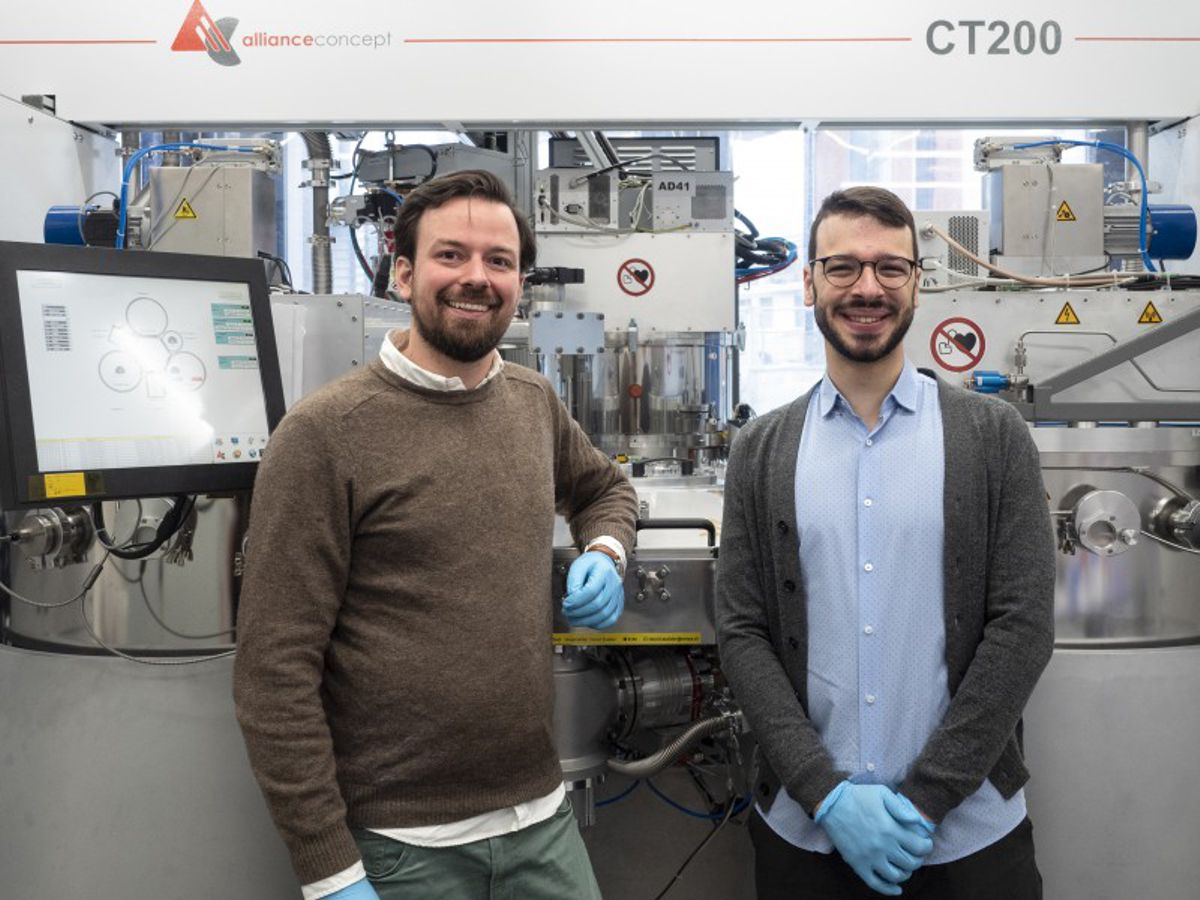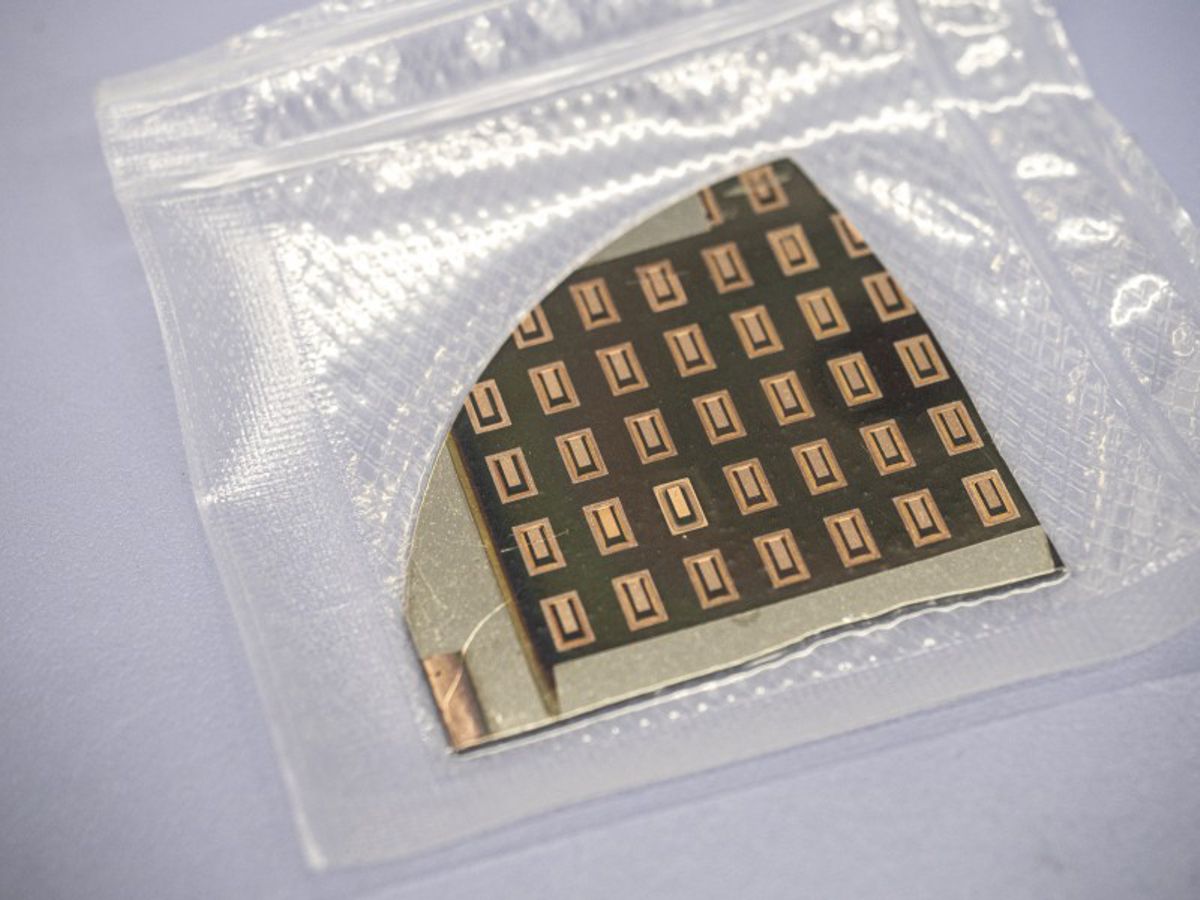Empa researchers promise a Rechargeable Revolution
Lithium-ion batteries are everywhere: from smartphones and laptops to cars and even satellites. It is currently our most mature battery technology. Yet it is not ideal for many applications. Lithium-ion batteries lose capacity with every charge and discharge cycle, charge relatively slowly and only work well in a narrow temperature range.
According to Empa researchers Abdessalem Aribia and Moritz Futscher from Empa’s Thin Films and Photovoltaics laboratory, it is time to rethink battery technology. Compared to other existing or developing technologies, their lithium metal-based solid-state battery brings some significant advantages: It can be charged and discharged within one minute, lasts about ten times as long as a lithium-ion battery, and is insensitive to temperature fluctuations.
In addition, unlike lithium-ion batteries, it is not flammable – a major advantage, because today’s rechargeable batteries are considered hazardous materials. Incorrect handling or damage to a conventional lithium-ion cell can lead to a fire that releases toxic gases and is extremely difficult to extinguish. “By contrast, if you cut our battery with scissors,” Aribia says, “you will simply get two batteries that are half as good.”
Aribia and Futscher now want to bring this promising technology to market. Together with lab head Yaroslav Romanyuk, they have founded a spin-off called BTRY (pronounced “battery”). Aribia, who takes on the role of CTO at BTRY, had never previously thought of starting his own company. CEO Moritz Futscher, on the other hand, has been interested in startups since he was a student. The two researchers have been working together on the battery project for years and are a well-established team. “We are convinced that our product can offer real added value,” says Futscher.

High-precision manufacturing
The new battery is a so-called thin-film solid-state battery. The technology itself is not new: Such batteries have been known since the 1980s. However, due to the very low mass of their thin-film components – the entire cell is only a few micrometres thick – they have been able to store very little energy so far. Futscher and Aribia have succeeded in stacking the thin-film cells on top of each other, increasing their capacity.
This makes the battery very promising for commercial applications. The thin-film cells are manufactured using vacuum coating: The desired materials are atomized in a vacuum chamber to form individual atoms, which are then deposited in a precisely controlled layer on the target substrate. “Such manufacturing methods are currently used on a large scale in the production of semiconductor chips and glass coatings,” Futscher says. “That’s an advantage for us, because the machines and know-how to manufacture our battery are largely in place already.”
The high-precision manufacturing method has an additional advantage: “In contrast to the traditional method of battery production, our method does not use toxic solvents,” explains Aribia. However, it also makes the thin-film battery more expensive. The researchers therefore see its application primarily in products where the battery only accounts for a small part of the overall cost of the device – for example, in smartphones and smartwatches or in satellites. “There, the advantages of our technology more than make up for the higher price,” Aribia states.
Investors Wanted!
The researchers are not the only ones who believe their product has a lot of potential. BTRY was supported by Innosuisse and made it into the business incubator of the European Space Agency (ESA). In addition, Aribia received an Empa Entrepreneur Fellowship, which supports young researchers who want to found a company.
But before the first thin-film batteries launch into space or supply smartphones with electricity, there is still a lot of work to do, both on the administrative and on the technical side. In the meantime, the two founders are using the equipment and facilities at Empa’s Coating Competence Center to create bigger and more powerful battery prototypes in order to show potential investors that the technology is worth backing.
Over the next two years, the researchers want to increase both the surface area of the battery and the number of layers. “Currently, our batteries consist of only two layers of about 1×3 millimeters,” Aribia says. “Next, we want to make a battery of about one square centimeter with two to three layers. We can’t power a satellite with that yet – but we can very well show that our technology is scalable.”

Support for start-up founders
The Empa Entrepreneur Fellowship is awarded to Empa researchers who want to found a start-up based on their research. The fellowships are awarded on a competitive basis and include financial support for twelve months.
Empa spin-offs and start-ups receive additional support in the two business incubators glatec in Dübendorf and Startfeld in St. Gallen.



















